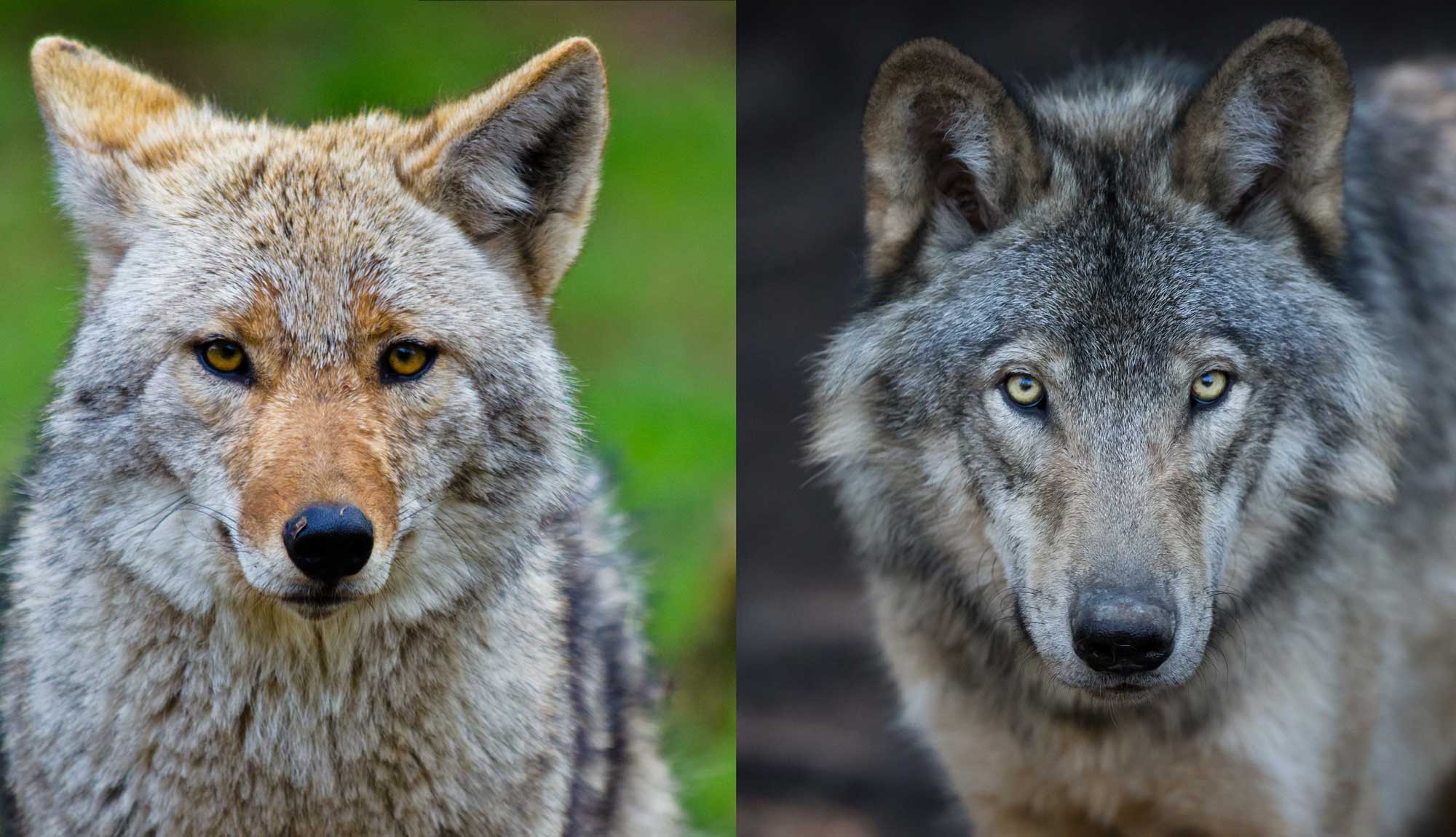What's the difference?: Coyote vs. wolf

While we mostly think of canines as pets that become part of our families, both coyotes and wolves are wild canines that can be found in various areas of the United States.
Historically, gray wolves lived across almost the entire northern hemisphere, but most of their range has been lost to habitat destruction, changes to the environment and human persecution, according to Animal Diversity Web. Today, their range is limited to a few select areas of the United States as well as Canada and Mexico. Meanwhile, coyotes are common across Illinois and much of the United States, Canada and Mexico and parts of Central America.
Wolves once lived in Illinois, but they have been extirpated since the 19th century. Small populations do still live in neighboring and nearby states including Michigan, Minnesota and Wisconsin, Wildlife Illinois reports. On rare occasions, gray wolves from nearby states make their way into Illinois, usually from Wisconsin. Since 2002, 11 confirmed wolf sightings have been documented in Illinois.
Wolves were at one time listed as a federally endangered species, but they were removed from the list in 2020. In Illinois, they remain an endangered species, although because their federal status was changed they may also be removed from the list when it is next updated in 2025, the Illinois Department of Natural Resources reports.
Both coyotes and wolves can live in a variety of habitats, including forests, prairies and desert-like or arid habitats, Animal Diversity Web reports. Coyotes don't mind living alongside humans, so they are quite common in suburban and even urban habitats.
In places where their range overlaps, it may be hard to tell the difference between a coyote and a wolf because of their somewhat similar appearances. But while they do look similar and are closely related, there are several ways to tell them apart. For starters, their size. Wolves are much bigger than coyotes. Wolves can be as much as 6 feet long and stand 30 inches tall at the shoulder, according to Colorado Parks & Wildlife. Meanwhile, coyotes are about 4 feet long and 18 inches tall at the shoulder. Wolves also weigh more, up to 80 pounds for females and 100 pounds for males, while coyotes usually weigh between 15 pounds and 45 pounds, but usually no more than 35 pounds.
It can be difficult to tell the size of an animal without anything to compare it to, so other physical characteristics can be useful as well. If you can get a good look at the animal's face, both the ears and snout hold clues to whether an animal is a wolf or coyote. Wolves have blocky snouts, while a coyote's snout is more pointed, the Iowa Department of Natural Resources reports. Similarly, coyotes have pointed ears, while a wolf's ears are more rounded. And coyotes have bigger ears relative to the size of their head.
If you spot a coyote or wolf in the distance, or even nearby, you can tell them apart by how they hold their tails while walking. Coyotes point their tails downward while walking, but wolves elevate them so they are in line with their backs while walking, according to Wildlife Illinois. One last key physical difference is their fur color. Coyotes usually have more grayish-brown fur, while a wolf's fur is light gray or blackish.
If all you have to go on is tracks in the mud or snow, you can still tell whether it was a wolf or coyote that passed by. Their paw prints look similar, with four symmetrical toes and visible claw marks, but a wolf's print will be about twice as large as a coyote's, measuring about 4 inches wide by 5 inches long. If you can follow their tracks, a wolf's tracks will also be more direct than a coyote's.
